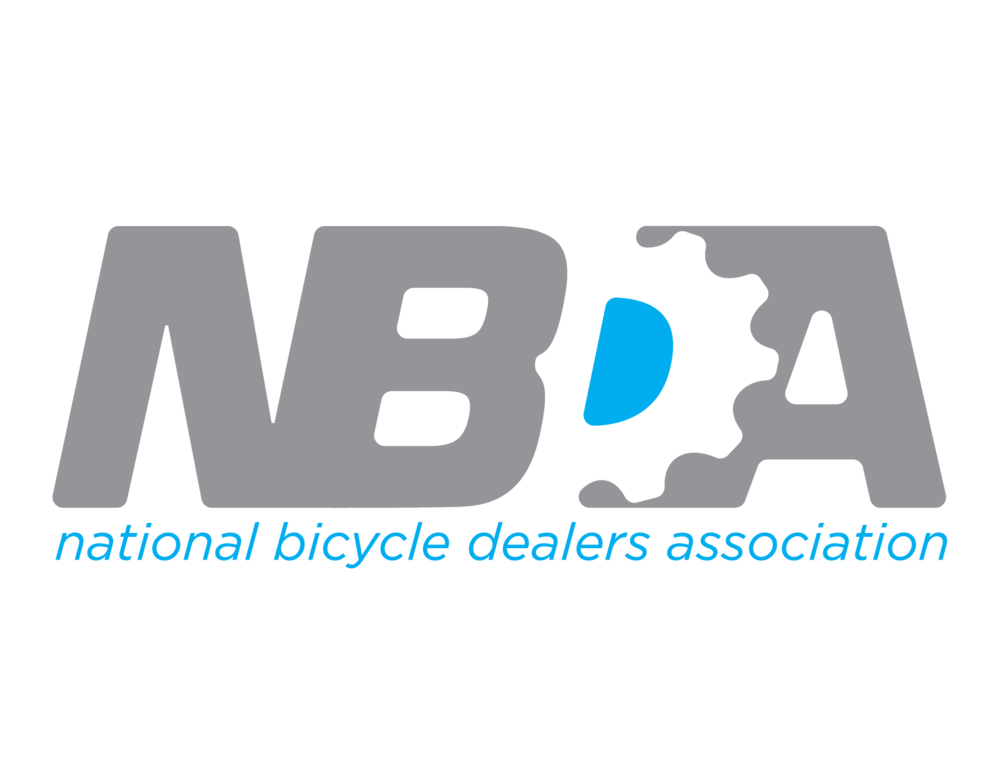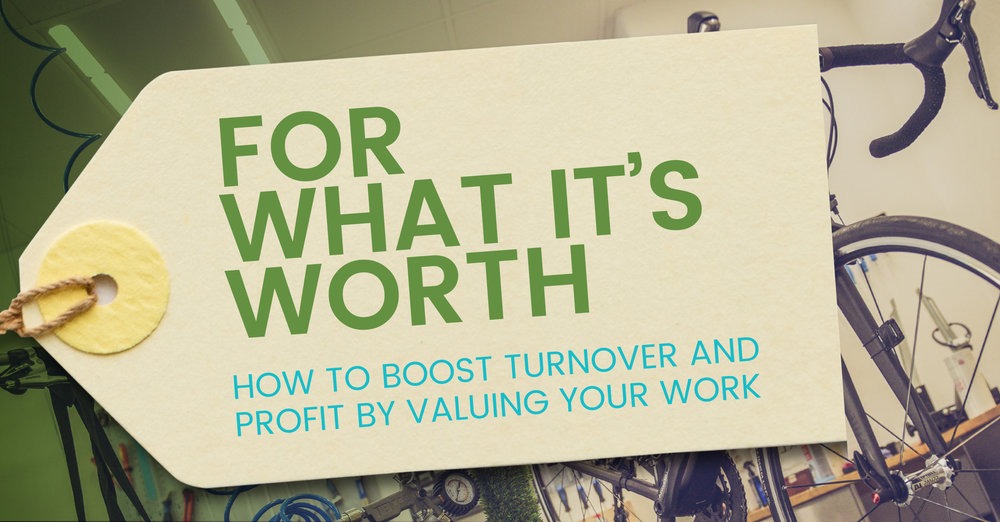Turnover and Profit: For What It’s Worth
By Jonathon Nunan
Establishing ‘Value,’ And Why It Matters
Let’s start here: ‘Value,’ as opposed to ‘price’ or ‘margin,’ is key to the future of profitability in bicycle retail. At its heart, value represents the transactional equivalence given to something you wish to acquire or receive, such as a product or service. The ‘price,’ in theory, should reflect that perceived or accepted equivalence. So, in theory, the higher the value, the higher the price.
Value is made up of many judgments including quality, need, value-add, durability, desirability, image, connection, and more. In today’s retail environment, where costs of doing business are rising and consumer price expectations are lowering, it’s getting harder to sustain or protect profitability and, it follows, viability. You either have to reduce costs or increase prices. Reducing costs only tends to bring short-term benefits, with the eventual erosion of quality, service, availability, choice, reliability, etc., all of which ultimately reduce turnover, customer retention, and reputation. From there, you cut prices even further to sustain consumer interest, leaving you with both low profit and low turnover.
But, you don’t want to raise prices on too many products because of the need (perceived or real) to remain market-competitive. That means that the only other way to increase turnover and profit, without raising your product prices, is to find the extra turnover and profit from within your existing resources and capabilities—in this case, your service products. And I use the term ‘service products’ deliberately. I’ll come back to that in a minute, after paying a brief visit to a business that—in contrast to most bike shops—has made ‘value’ central to its profitability.
 When I pick up my Audi from the service center, I’m greeted by the impossibly smiley service manager, who sits me down (apparently worried that I’ll faint, or something), then hands me a coffee and the itemized bill. Laid out before me in small print on two pages is the line-by-line list of things they apparently did to, or checked on, my car:
When I pick up my Audi from the service center, I’m greeted by the impossibly smiley service manager, who sits me down (apparently worried that I’ll faint, or something), then hands me a coffee and the itemized bill. Laid out before me in small print on two pages is the line-by-line list of things they apparently did to, or checked on, my car:
- Opened the doors
- Walked around the car three times
- Closed the doors
- Plugged in the diagnostic cable
- Unplugged the diagnostic cable
- Checked for spare change in the glove box
- Changed the whatchamacallit
- Fiddled with the thingamajig
- Changed the green coolant for the pink coolant you can’t buy anywhere else
- Retuned the radio stations (who knew there was a dedicated death metal station in Melbourne?)
- Put the driver’s seat into a position I didn’t realize was possible
- Pumped up the tires
- Changed the wiper blades
- Cleaned the car, and put shiny black stuff on the tires
- Sprayed some sickly vanilla fragrance through the car
I glance around the glitzy showroom, which resembles the starting point for the next supercar challenge on Top Gear. I hand back the keys to the quite-a-bit-nicer and can’t-quite-afford-it convertible they loaned me. I then finish my $2,000 cup of coffee and hand over my credit card to the fresh-faced young assistant who offers me another drink and a toy car to give to my toddler.
Contrastingly, what a typical bike shop would do instead is this: Hand me my bike, charge me $100 for $200 worth of labor, and then apologize because they had to charge me for some new cables on top. But, they fitted the bar tape and computer I bought (on sale) for free, plus, they cleaned my bike for me—partly out of frustration at having to work on my dirty bike, and partly because they were trying to ‘go the extra mile.’ Bless them.
And what’s wrong with that, then? Essentially, they didn’t value what they did for me as much they should have or could have. I, in turn, accept that that’s all their service and expertise is worth, and further entrench my already low expectations on what I’ll pay at my local bike shop. The cringing fear by the bike shop with regards to charging me, the customer, for what I asked for in the first place and the extras I really needed to pay for (e.g. the cables, the bar tape fitting, and the bike wash) is palpable. It reveals insecurity, as well as a sense that what they provide me doesn’t hold much value.
Time To Treat Your Service Just Like A Product

Now, of course, I was being more than tongue-in-cheek with regards to my Audi experience. Jokes aside, though, the important lesson I wanted to convey was the fact that they, like any professional service center:
- List every single thing they do on their invoice
- Value every single action or service they perform, both literally and figuratively
- Charge what they believe to be a true value for everything they do
- Don’t blink or cringe when they hand me the invoice—indeed, they make a bit of a show of it
Get together with your mechanics and whiteboard every single function, action, and service you perform as a bike shop, from major tasks such as ‘Di2/EPS bike build,’ ‘fork strip and service,’ or ‘custom wheel build,’ down to the simplest of tasks, such as ‘pump tires,’ ‘change tube,’ or ‘fit bar tape/grips.’
Next, open up the product creation screen in your store’s RMS (retail management system) and create product codes and descriptions for every single line item. Determine a value for each ‘service product’ (I told you I’d come back to that). The values can be nominal, calculated on a time by hourly rate, or given extra weighting based on a technicality, tooling, or knowledge/training requirements. But whatever you do, assign every ‘service product’ a value.
Now, list every ‘service product’ action you perform, no matter how menial, on every invoice. You can choose to discount any line item on the invoice, partially or fully, but make sure it’s there—both the charge and the discount.
How Does That Boost Your Turnover and Profit?
In short, setting up priced ‘service products’ will allow you to charge more, more often, to more customers.
It makes a clear statement that everything you do has both a value and a cost. Crucially, it also does the same for you and your staff. Over time, it normalizes and instills that fact. This helps you to emphasize your technical skills, training, and service proposition. It helps build your store’s value.
You can discount, partially or fully, ‘service product’ line items for ‘valued’ customers, hence improving your customer loyalty and retention rate. And as we know, loyal customers spend more, both per transaction and over time.
For the customer who brings in a product they purchased elsewhere to fit to their bike, it provides a transparent way to quote and charge for your services. It helps to remove the awkwardness many IBDs feel when discussing servicing, building, or fitting costs.
Plus, you can monitor and report on these ‘service products’ in pretty much the same way you can with your physical products. Analyzing frequency, sales, and profitability allows you to manage strategies to improve those KPIs. You can better report on and value your workshop’s performance, as well as your individual staff. And importantly, you can more accurately value and assess your customers.
Show your value. Build your value. Charge your worth.

This article was first published by BikeRoar, an online resource that helps cyclists #BuyLocal and equips bicycle retailers with online marketing solutions to gain and retain customers.
 The NBDA has been here since 1946, representing and empowering specialty bicycle dealers in the United States through education, communications, research, advocacy, member discount programs, and promotional opportunities. As shops are facing never-before-seen circumstances, these resources offer a lifeline. Together, we will weather this. We at the NBDA will not waver in our commitment to serving our members even during this challenging time—but we need your support.
The NBDA has been here since 1946, representing and empowering specialty bicycle dealers in the United States through education, communications, research, advocacy, member discount programs, and promotional opportunities. As shops are facing never-before-seen circumstances, these resources offer a lifeline. Together, we will weather this. We at the NBDA will not waver in our commitment to serving our members even during this challenging time—but we need your support.
Now is the time to become a member as we join together to make one another stronger. Whether you’re a retailer or an industry partner, your membership in the NBDA is one of the best investments you’ll make this year.
Learn more about the benefits of being a member and join now.








